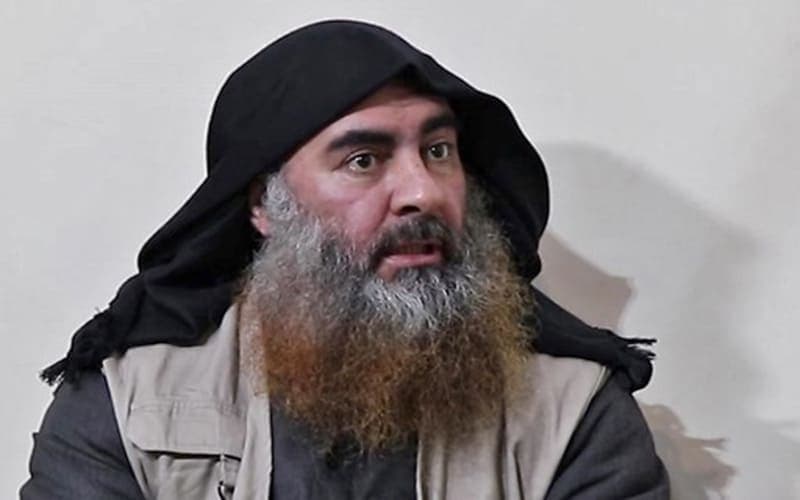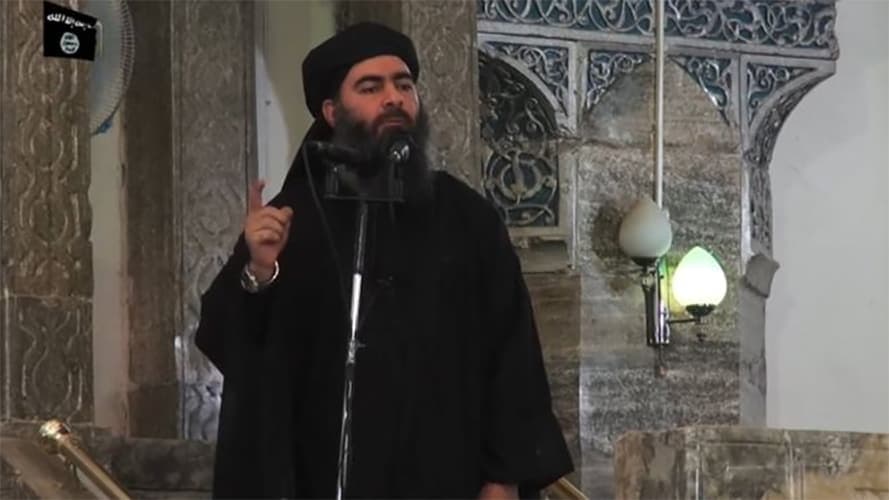By SAEED NAQVI
Hyderabad: Hard to believe, but the great poet, Ghalib would have envied Abu Bakr al-Baghdadi and Osama bin Laden for the way the two were drowned and not buried. He wrote:
“Huwe mar ke hum jo ruswa
Huwe kyon na gharqe dariya?
Na kabhi janaza uthta
Na kaheen mazar hota.”
(I was embarrassed after my death; I should have been drowned. There would have been no need for an unattended funeral, Or an unvisited grave.)
The manner of al-Baghdadi’s death is still something of a “whodunit”. President Donald Trump’s graphic description of the ISIS chief’s death has been given scant credence. Always contrary to what the US calls “normal behaviour”, Iran’s information minister Javad Azari-Jahromi said, “No big deal, you just killed your creature”. But the New York Times’ establishment columnist Thomas Friedman notes, satirically, how “effusive Trump was of the intelligence agencies who found and tracked al-Baghdadi to his lair in Syria where he blew himself up to avoid being captured”.
Mr Friedman then gives vent to the bile he has accumulated against Mr Trump for having been continuously at cross-purposes with the deep state: “Well, Mr President, those are the same intelligence agencies who told you that Russia intervened in our last election in an effort to tip the vote to you and against Hillary Clinton”. Little wonder, Mr Friedman loathes senators obstructing Mr Trump’s impeachment: “Despicable, disgusting” he said on CNN.
Military conflicts
When history is written, Mr Trump will be chastised for a hundred reasons, and severely. But it would be uncharitable not to note one truth about him: Mr Trump is the only President in recent history who tried to end military conflicts the US was involved in and who did not start a conflict. There have been 13 military conflicts in recent decades costing $18 trillion, by some estimates.

AFP 
As for al-Baghdadi, well, his image did have its uses. To that extent, do the Iranians have a point? The last time al-Baghdadi’s photograph appeared on front pages of newspapers was after the Easter Sunday massacre in Colombo, Sri Lanka on April 21. On TV too al-Baghdadi was shown claiming the massacre as “revenge” for an attack on a mosque in New Zealand. French experts, among others, soon established that it was a fraudulent clip — a voice had been super imposed on his visage. Which outfit would like to stir up a conflict between Sri Lanka’s two frail minorities — Muslims and Christians? New Delhi alerted Colombo as early as April 4 that a major terrorist attack could be expected. How did New Delhi know?
Sri Lanka divided between two camps
At this time Sri Lanka was sharply divided between two camps: President Maithripala Sirisena had embraced China’s Belt and Road Initiative; Prime Minister Ranil Wickremesinghe was in convulsions to sign the (SOFA) Status of Forces Agreement with the US before the next general election.
The island nation is at the centre of fierce competition between a rising China and a retreating US for influence in the Indian Ocean. Over 300 people were killed; 500 injured. Among those killed were Chinese marine engineers. The hotels attacked have Chinese links. Why has the media not pursued the story to its end?
A small island nation, just recovering from a vicious civil war, would be shaken up by the sheer scale of the massacre. National anxiety would warrant the appearance of intelligence agencies from everywhere — the US, the UK, Israel, Australia, India. An initial pooling in of intelligence would lead to a penetration of systems until the benefactors achieve their immediate goal to place roadblocks in the way of the Belt and Roadproject.
Police sniffer dogs found something extraordinary while walking through the Jaic Hilton hotel. The dogs stopped in front of an apartment and would not stop barking. The management cited some difficulties in opening that apartment. After considerable time, two persons claiming to be with the US embassy turned up. In the room were two “explosive detectors”. The detectors were for their personal security, said the two men. They ignored the obvious fact: dogs would only bark if the detectors had been in touch with explosives. These details are available only because of investigations conducted by Dr Michael Roberts of the University of Adelaide.
Those who initially tried to foist the tragedy on al-Baghdadi were obviously embarrassed. Who were they? The NYT’s Mr Friedman had once recommended that al-Baghdadi can be creatively used in the American interest. He advised Mr Trump not to waste his time fighting ISIS. He wants “Trump to be Trump — utterly cynical and unpredictable”. He continues, “Trump should let ISIS be Assad’s, Iran’s, Hezbollah’s and Russia’s headache”. Wonderful uses of al-Baghdadi and ISIS?
Mr Friedman has not cooked up the theory of terrorism as a strategic asset on his own. He has acquired this wisdom from leaders, including US Presidents like Barack Obama. In the course of a lengthy interview in August 2015, he asked Mr Obama a very pertinent question. When ISIS first reared its head in Mosul a year ago, why did the President not immediately bomb it out of existence?
Mr Obama stated quite plainly: “We did not just start taking a bunch of airstrikes all across Iraq because that would have taken the pressure off the Iraqi Prime Minister, Nouri al Maliki”. Mr Obama’s priority was not the elimination of the founder of the caliphate. His priority was to exert pressure on Nouri al Maliki to vacate the Iraqi Prime Minister’s office. Why? Because Mr Maliki was “brazenly” pro-Shia and had refused to sign the Status of Forces Agreement with the US. Mr Obama’s “one-two” (to use a term from boxing) worked. US pressure, and al-Baghdadi’s menacing presence at the gates of Iraq’s capital helped ease Mr Maliki out.



